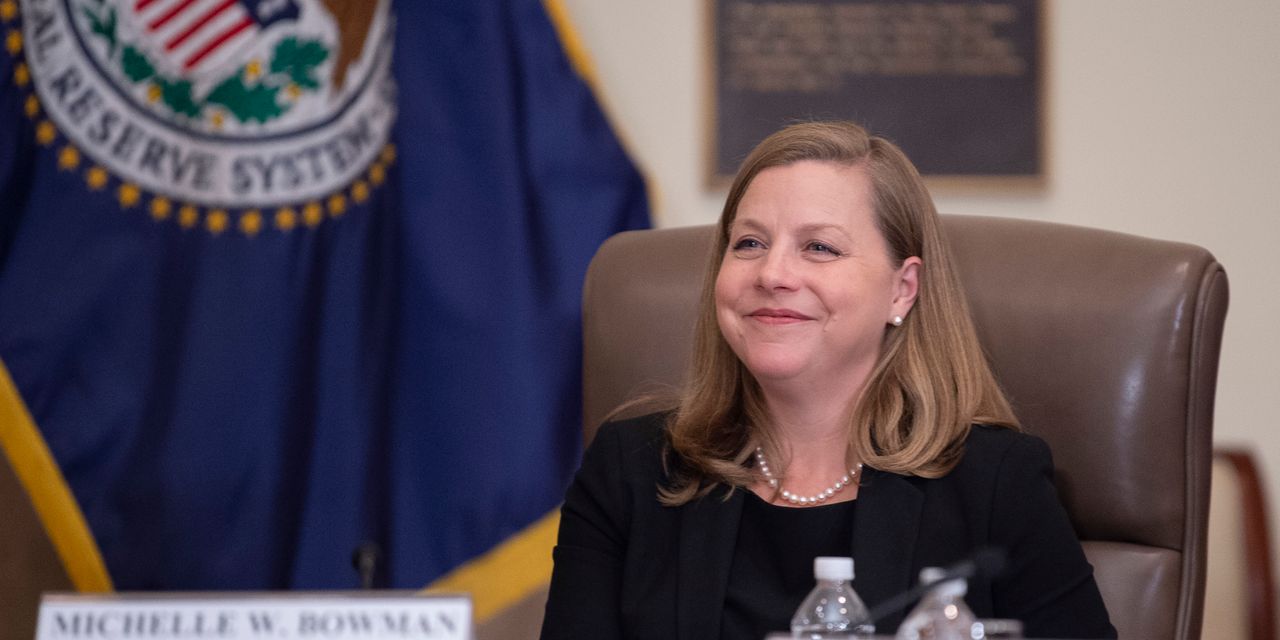The U.S. Federal Reserve Board should consider relaxing bank-merger guidelines focused on branch concentration, last updated in 1995, to account for competition from financial technology companies, Michelle Bowman, a governor at the Federal Reserve Board, said Wednesday.
Big banks such as JPMorgan Chase & Co.
JPM,
and Bank of America Corp.
BAC,
have adjusted their businesses to address threats from fintech rivals, Bowman said, but the Federal Reserve has been using the same framework for evaluating competition for the past 27 years.
“We need to capture these granular competitive effects across different geographic and product markets,” said Bowman, who heads up the Fed’s bank-competition efforts. “One way to do this is by relaxing the deposit-market-based [bank-concentration] thresholds in the current bank merger guidelines to reflect the increased competitive influence banks face from nonbanks today.”
See: Bank of England actions have no immediate implications for Fed policy, analyst says
Bowman did not give a timeline for the proposed changes, but she noted the need to update the Herfindahl-Hirschman Index thresholds that the central bank uses to determine market competitiveness when banks propose a merger.
Typically, when banks merge, the Fed will review the number of branches the combined business would have in the banks’ respective communities. If the concentration is too high, regulators may urge the banks to divest some branches to protect competition and avert the potential for higher fees and fewer choices for consumers in a given area.
But fintech challengers have been providing consumers with alternative delivery channels for “the cluster of banking products and services they desire,” Bowman said, and the Fed needs to take appropriate steps to “understand the competitive pressure they exert and modernize our approaches to measuring competition.”
Also read: Fintech company Ocrolus co-authors study on how automation can reduce bias in lending
The Fed’s current framework aims to promote a competitive marketplace for
banking products and services, but if it does not account for all competitors, “we’re only restricting banks from making strategic merger choices, while allowing those outside the framework to proliferate,” Bowman said
Bowman’s remarks came in her speech Wednesday at the annual Community Banking Research Conference, taking place Sept. 28-29.
Although the Fed’s bank-merger guidelines regarding branch concentration have not been revised since 1995, banking regulators are working on a major overhaul of the Community Reinvestment Act, which was passed by Congress in 1977 and last updated in the 1990s.
Also read: Can an effort to revamp anti-redlining lending laws survive the swamp?
